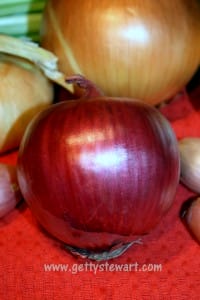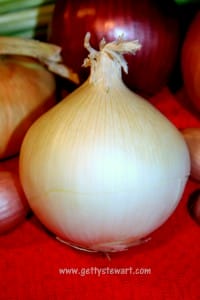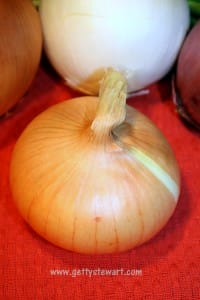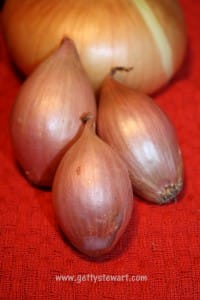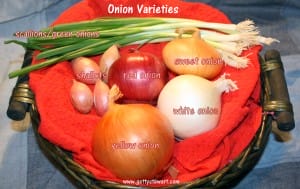Onion Varieties and What to Do if You Don’t Have the Right Type
How often do you use onions in your cooking? If you cook regularly, the answer is likely 5- 7 times a week! The common onion is a household staple that’s been one of the most commonly used foods throughout the world for over 3,500 years. And for good reason – not only are onions easy to grow and add flavor and texture to cooking, they’re also very nutritious.
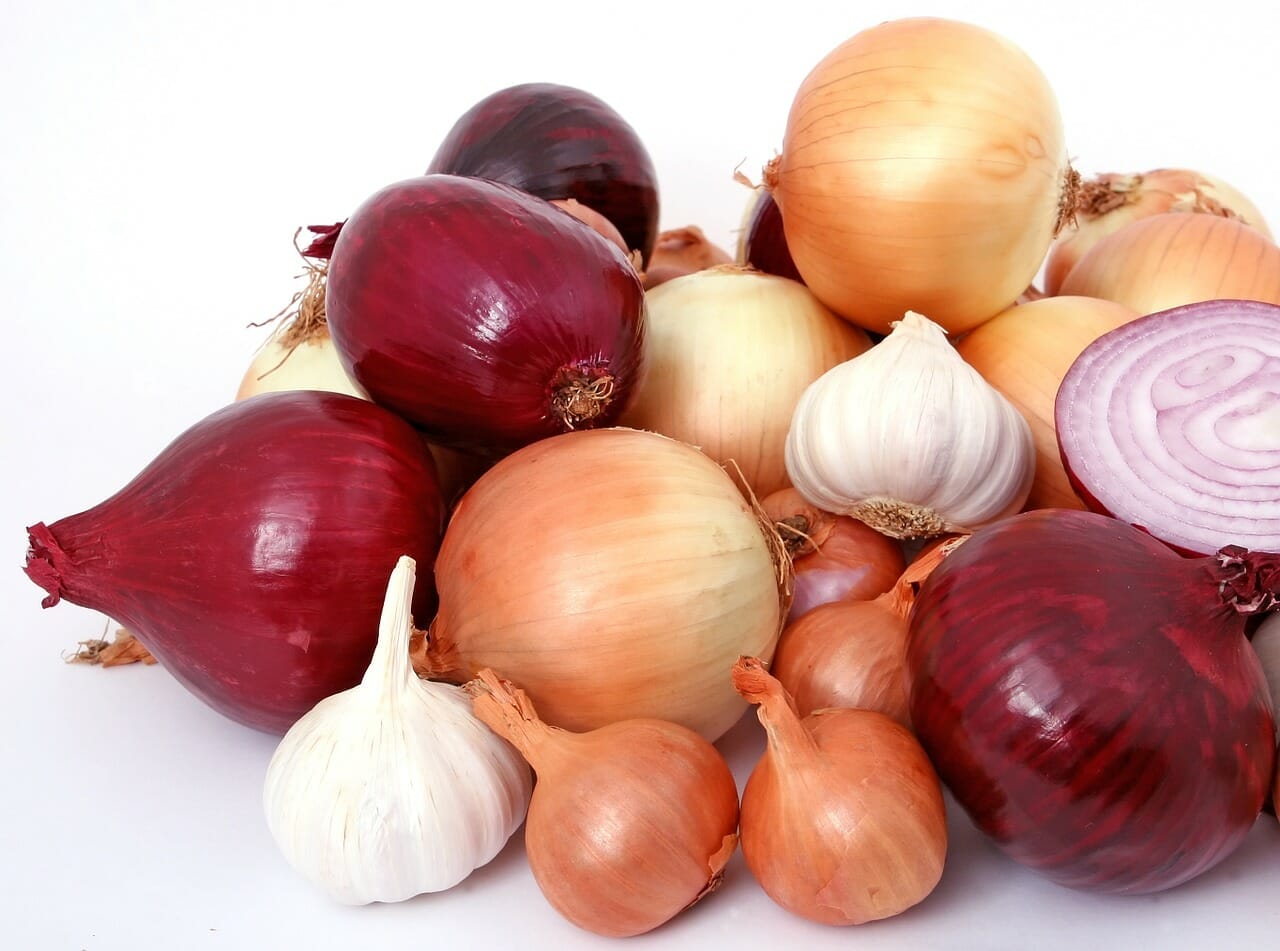
Are onions good for you?
The National Onion Association lists various research studies indicating benefits include the prevention and treatment of common diseases like cancer, heart disease, type 2 diabetes, cataracts, osteoporosis, asthma and allergies. That’s pretty impressive. And even for people like me, who don’t like raw onions, there are plenty of nutritional benefits to be had from cooked onions.
Even though they may lead us to tears and leave our hands a little smelly, it’s worth exploring these gems in more detail.
Onion Varieties
My mom was a no fuss cook. She prepared meals based on what was available; in this case, yellow onions. Salads, dips, dressings, sauces, soups, entrees, sides, sandwiches, breakfast, lunch and dinner all featured the yellow onion. There was one exception – springtime.
The time when chives and green onions were available in the garden. Oh, how I loved spring cooking when that harsh onion flavor in salads and dips was replaced with the much milder flavor of chives and green onions. It was my first lesson on choosing the right onion for the right job.

Yellow Onions
– an all purpose, versatile cooking onion (eg. Spanish onion)
– strong pungent flavour and smell
– their high sugar content makes them sweeter when cooked, ie. an excellent choice for caramelizing
– best choice for storage
– have the highest sulfur content, which means it’s most likely to induce tears
– best choice for onion soup and most cooked dishes
Red Onions
– crisp onion flavor with beautiful purple color
– best used in raw dishes like salads and sandwiches
– red color gets washed out if cooked too long
– if not over-done, red onions are great on the grill
White Onions
– crispier and more pungent than yellow onions
– a higher water content means they have a shorter storage life
– excellent for cooking
– become more tender and less noticeable when cooked
– often used in Mexican cooking eg. salsa
Sweet Onions
– look similar to yellow varieties with a golden brown papery skins
– often sold under the name Vidalia, Walla Walla or Maui
– typically available from April to August in North America
– mild, sweet and crisp
– high water content makes them more perishable, ie. not great for storing
– less pungent due to lower sulfur content, ie. fewer tears and less pungent flavor/smell
– great for use in raw dishes like salads, sandwiches, or burgers
Shallots
– sweet, mild flavoured
– grow in clusters like garlic bulbs, but sold as individual cloves
– their smaller size and softening when cooked, make them ideal for sauces, gravies and other dishes where you want onion flavor without the texture
– good for vinaigrettes, salads and other dishes where just a bit of onion flavor is needed
Scallions/Green Onions
– scallions and green onions are the same thing
– long hollow green leaves, without a fully developed root bulb (onion)
– mild onion flavor
– typically used raw or lightly cooked
– ideal in salads, dips, Asian cooking or in finishing a dish such as soup, stew or pasta
What if You Don’t Have the Right Onion?
I do believe there are some recipes where it matters what type of onion you choose. However, in most cases substitutions are possible. Just think about what the onion is suppose to offer to a particular recipe.
For overall flavor in a cooked dish
Just about any onion will do, if you don’t have any – use other strong flavoured spices like curry, garlic, peppers
For just a hint of onion flavor
Substitute with another mild flavoured onion, use smaller quantities, use onion powder or reduce the pungency by soaking in water for 1 hour before using
For texture
Consider using cabbage or shredded carrots combined with onion or garlic powder
For sweetness
Use a combination of shredded carrots and onion powder
Video: How to Dice Onions
Step by Step: How to Dice Onions
- Peel rough papery bits off onion.
- Cut the onion in half from root to tip.
- Slice tip off, then peel remainder of skin.
- Place flat side down.
- Cut 5-6 horizontal slices, leaving the root intact.
- Cut 5-6 vertical slices, leaving root intact.
- Slice across to dice.
Video: How to Dice a Large Batch of Onions
Dice a whole batch of onions all at once and freeze them, it’s super convenient. How to Chop and Freeze Onions.


